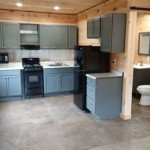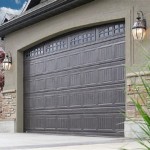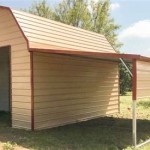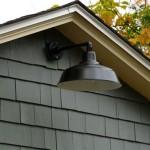Creating A Functional And Stylish Garage Workbench: Plans and Considerations
The garage workbench is often the unsung hero of the home. It serves as a central hub for DIY projects, repairs, and a variety of hobbies. However, a poorly designed or cluttered workbench can quickly become a source of frustration rather than a helpful workspace. Careful planning and consideration are crucial for creating a functional and stylish garage workbench that meets individual needs and complements the overall aesthetic of the garage.
Developing appropriate workbench plans involves more than simply slapping together some lumber. It requires a thorough understanding of available space, the types of projects the workbench will accommodate, desired storage solutions, and ergonomic considerations. A well-executed plan maximizes efficiency, improves organization, and transforms a chaotic space into a productive and enjoyable work area.
Understanding Space Constraints and Workbench Size
The first step in creating a successful workbench plan involves a realistic assessment of the available space within the garage. The dimensions of the garage will dictate the practical limits of the workbench's size. It is vital to measure the intended location carefully, considering factors such as existing shelving, vehicle parking areas, and pedestrian pathways. Avoid creating an obstruction that hinders the regular use of the garage.
Once the overall available space is known, decisions must be made regarding the workbench's dimensions. Length, depth, and height are all critical factors. A longer workbench provides more surface area for larger projects, while a deeper workbench offers more room for tools and materials. The height should be ergonomically suitable for the user, preventing excessive bending or reaching, which can lead to fatigue and strain.
Consider the types of projects that will primarily be undertaken on the workbench. If woodworking is a frequent activity, a larger and more robust workbench with ample surface area will be necessary. For smaller, occasional tasks such as electronics repairs or model building, a smaller and more compact workbench may suffice. It's also important to think about the potential for future expansion. Will the workbench need to accommodate larger projects or more tools in the future? Leaving room for growth during the initial planning phase can prevent the need for costly and time-consuming modifications later.
Additionally, assess the garage's layout. A workbench positioned against a wall will generally be more stable and provide more support. An island workbench, however, offers access from all sides and can be useful for collaborative projects or larger items that require maneuverability. Corner workbenches are also a viable option for maximizing space in smaller garages.
Designing for Functionality: Storage and Tool Organization
A functional workbench extends beyond just a flat surface. Effective storage and tool organization are paramount. A cluttered workbench inhibits productivity and makes it difficult to find the right tool when needed. A well-designed plan incorporates a variety of storage solutions to keep tools and materials readily accessible and neatly arranged.
Consider various storage options when developing workbench plans. Drawers provide enclosed storage for smaller tools, hardware, and accessories. Different drawer sizes and configurations can be tailored to specific needs. Shallow drawers are ideal for organizing frequently used items, while deeper drawers can accommodate larger tools or bulky materials. Drawer dividers and organizers further enhance functionality by preventing tools from becoming jumbled and difficult to locate.
Shelves offer open storage for larger items, such as power tools, paint cans, and lumber. Adjustable shelves provide flexibility to accommodate items of different sizes. Consider the weight capacity of the shelves to ensure they can support heavy tools and materials. Shelves can be positioned above the workbench to maximize vertical space or below the workbench to provide easily accessible storage. For items that are used infrequently, consider storing them on higher shelves.
Pegboards are a classic and versatile storage solution for hanging tools. They allow for easy visibility and access to a wide range of hand tools. Hooks, hangers, and baskets can be used to customize the pegboard to suit specific tool collections. Pegboards are particularly useful for frequently used tools that need to be readily available. Consider the size and number of tools when determining the appropriate pegboard size.
Another often overlooked storage option is overhead storage. Suspended shelves or cabinets can be installed above the workbench to utilize unused vertical space. This is particularly useful for storing seasonal items, less frequently used tools, or long-term projects. Ensure that overhead storage is securely mounted and easily accessible with a step stool or ladder.
Integrated power outlets and lighting are also important considerations for functionality. Strategically placed power outlets eliminate the need for extension cords running across the workbench, which can create a tripping hazard. Adequate lighting ensures good visibility and reduces eye strain during detailed work. Consider installing task lighting that can be adjusted to focus on specific areas of the workbench.
Creating a Stylish and Durable Workbench
While functionality is paramount, aesthetics should not be overlooked. A stylish workbench can enhance the overall look and feel of the garage, making it a more enjoyable and inviting workspace. The choice of materials, finish, and design details can significantly impact the workbench's visual appeal.
The choice of materials is a key factor in both the durability and aesthetics of the workbench. Solid wood, such as maple, oak, or birch, is a popular choice for its strength, stability, and natural beauty. Plywood is a more affordable option that can provide a smooth and stable surface. Medium-density fiberboard (MDF) is another cost-effective option, but it is less resistant to moisture and impact than solid wood or plywood. Metal frames offer excellent strength and durability and can be paired with a variety of countertop materials.
The finish applied to the workbench can significantly impact its appearance and durability. A clear finish, such as polyurethane or varnish, protects the wood from moisture and scratches while allowing the natural grain to show through. Paint provides a wider range of color options and can be used to create a more contemporary or industrial look. Consider the type of projects that will be undertaken on the workbench when choosing a finish. For example, a chemical-resistant finish may be necessary for work involving solvents or chemicals.
Design details can also enhance the workbench's style. Edge banding can be applied to plywood or MDF countertops to create a more finished and professional look. Decorative trim can be added to the workbench frame to add visual interest. Consider incorporating personal touches, such as custom hardware, painted accents, or engraved details, to create a unique and personalized workbench.
Durability is also a critical factor to consider when choosing materials and finishes. The workbench will be subjected to a variety of stresses, including impact, abrasion, and exposure to moisture and chemicals. Choose materials and finishes that can withstand these stresses and maintain their appearance over time. A solid wood countertop with a durable finish will be more resistant to damage than a particleboard countertop with a thin laminate finish. Invest in high-quality materials and construction techniques to ensure that the workbench will last for many years.
Finally, consider the overall style of the garage when designing the workbench. Choose materials and finishes that complement the existing décor and create a cohesive look. A modern garage with clean lines and minimalist design may benefit from a workbench with a metal frame and a sleek countertop. A more traditional garage may benefit from a workbench with a solid wood frame and a classic finish. By carefully considering the style of the garage, one can create a workbench that is both functional and aesthetically pleasing.

Build A Basic Workbench Tylynn M

How To Build The Ultimate Diy Garage Workbench Free Plans

14 Super Simple Workbenches You Can Build The Family Handyman

How To Build A Rolling Workbench Follow This Simple Diy Plans

How To Build A Diy Workbench Super Simple 50 Bench

How To Build The Ultimate Diy Garage Workbench Free Plans

The 10 Best Garage Workbench Builds

Mobile Workbench With Table Saw Tylynn M

11 Diy Workbench Ideas For Your Garage Or Office Simplified Building

Diy Workbench With Steel Frame The Handyman S Daughter
Related Posts








